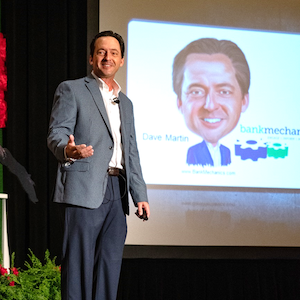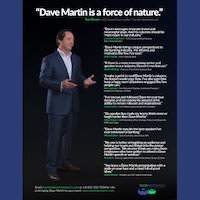 |
 |
When you blame others, you give up your power to change. » Robert Anthony
Counting Chickens
In a time crunch last week, my family voted for fast-food fried chicken for dinner.
I headed for a local drive-thru, and by the second time the guy taking my order over the intercom asked if I could give him another minute, I knew I was in for a wait.
When I was finally able to give my order, he apologized and said, “Sir, I really appreciate your patience.” The thing is, he sounded like he meant it.
And after repeating my rather large order to me he again apologized for the wait.
When I met the guy face-to-face at the window, he said, “Sir, it’s going to take four minutes to fry that order of tenders. Can I sub that out for you, or would you mind pulling ahead, and I’ll bring your order to your car?”
I chose to pull ahead.
From my vantage point in front of the store, I could see that the crew was truly hustling. There was a long line in the drive-up lane and a few customers at the counter.
I’m not sure what the FTE count was supposed to be at that time, but I’m thinking they were at least a couple of folks short.
After 10 minutes or so (or 3 or 4 songs on the radio), I noticed a couple of bags sitting on the counter. Since no customer in line was taking them, I figured it was my order and that the guy was having a hard time breaking loose.
I parked and walked in.
I would normally have more steam coming out of my ears than the boxes of chicken on the counter.
But upon seeing me, that manager said, “Oh, man…I’m so sorry. You shouldn’t have to come in here to get your order. Can I please give you a free soft drink or extra side dish for your wait?”
The guy seemed sincerely concerned that he inconvenienced me. It was obvious that he and his understaffed team were making an honest effort to give speedy service.
I politely turned down his offer and joked, “No problem. I needed the exercise.” He smiled and said, “Sir, I appreciate your attitude.”
I drove home thinking about how that manager took what could have been an awful customer experience and instead had me admiring his efforts.
In an episode that would otherwise have a customer thinking that a business was inept, I actually drove away with positive thoughts.
The lasting impressions you make on customers will often be as much about the sincerity and appreciation they sense from you as the service they experience.
What will yours sense today?
Just Goggle It
While doing research for a presentation recently, I found a report by Kathryn Houser for the CBS affiliate in Boston that caught my eye. Her report was entitled, “Retailers Using Science to Shape Shopping Experience.”
In it, she interviewed Dr. Carl Marci about a process that monitors shoppers’ eye movements and electric impulses in their fingertips as they shop. The doctor claims that in the seconds before a purchase decision is made, the brain reacts in an identifiable manner.
Being able to identify what stimuli create those reactions should help retailers create settings more conducive to increased purchases.
Granted, it’s hard to believe that a person wearing Ghostbuster-sized goggles on their head and sensors on their hands isn’t distracting.
And you’d think that knowing they are being monitored while “casually shopping” has to impact them.
That said, several of the shopping behaviors they are now “scientifically” observing are things good retailers have had a sense of for ages. For one, signs placed at eye level tend to be far more effective than those above or below. (That’s another thing dry-erase boards have going for them.)
A professor of neuromarketing, (yeah, that’s a thing), named Paul Zak stated, “If we present that stuff in an engaging and fun way, then people have a better experience, and sometimes they buy more.”
I smiled reading that and thought it’s nice that doctors and scientists are charging big bucks to tell folks things that any long-term shop owner could.
But shop owners don’t have fancy goggles or brain imagery on their laptops. So, well, there you go.
I’m not belittling the findings. Heck, I agree with them.
I just get a kick out of anyone having an “Oh wow!” reaction to findings that really shouldn’t come as a surprise to anyone in the business of encouraging shoppers to buy from them.
There are smart bank marketing folks who still question the value of contests, displays, and games that entertain and engage customers. And dry-erase boards tend to make them recoil in terror.
I’ve had scores of folks over the years give me all kinds of grief when I suggest such rudimentary ideas for in-store and traditional branches alike.
But those things actually work. Dudes with big goggles and finger electrodes now back me up.
And, hey… back off, man. They’re scientists.









